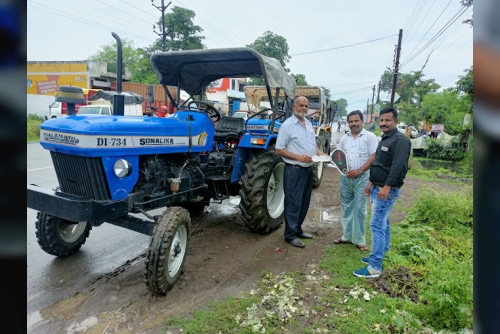In the ever-evolving world of agricultural machinery, the old tractor holds a special place in the hearts of farmers and vintage enthusiasts alike. While modern tractors boast cutting-edge technology and advanced features, the old tractor stands as a testament to reliability, durability, and simplicity—qualities that have made it indispensable on farms across the globe for generations.
A Symbol of Agricultural Heritage
The old tractor is more than just a machine; it is a symbol of agricultural heritage and rural resilience. For many farmers, their first tractor was an old model handed down through generations, serving as both a workhorse in the field and a family heirloom. These machines were built during a time when craftsmanship was paramount, often using solid cast iron parts, manual controls, and robust engines that could withstand years of rigorous use.
Built to Last
One of the most celebrated features of an old tractor is its longevity. Unlike modern counterparts that may rely heavily on computerized systems and sensors, old tractors operate with basic mechanics that are easier to maintain and repair. Many farmers still use these machines daily for plowing, tilling, or hauling, especially in smaller or traditional farms where high-tech equipment may not be practical or affordable.
Classic models like the Ford 8N, John Deere Model A, and Massey Ferguson 35 are iconic examples of the old tractor's enduring appeal. Known for their simplicity, these machines can often be restored to working condition with minimal resources, making them ideal for DIY mechanics and collectors.
Economic and Environmental Advantages
For budget-conscious farmers, an old tractor can offer a cost-effective alternative to new machinery. While newer tractors may require a substantial investment, older models are often available at lower prices and with fewer associated costs. Spare parts, when needed, are generally cheaper and widely available through online marketplaces or salvage yards.
From an environmental perspective, reusing and restoring old tractors also contributes to sustainability. Rather than scrapping aged equipment, giving it a second life reduces waste and minimizes the carbon footprint associated with manufacturing new machinery.
A Passion for Restoration
Beyond utility, the old tractor has carved a niche in the world of vintage machinery restoration. Tractor shows, swap meets, and online communities bring together enthusiasts who take pride in restoring these machines to their former glory. For them, the old tractor is not just a tool—it’s a passion. The process of restoring an old tractor involves mechanical skill, historical knowledge, and patience, but the result is often a beautifully preserved piece of agricultural history.
Conclusion
The old tractor continues to play a valuable role in modern agriculture and cultural preservation. Whether actively working the fields or displayed as a piece of rural nostalgia, these machines embody the spirit of hard work and resilience. Their enduring functionality, combined with their historical significance, ensures that the old tractor will remain a treasured part of the farming community for many years to come.
For farmers, restorers, and collectors, the old tractor isn’t just a relic of the past—it’s a trusted companion and a reminder of the simpler, steadfast roots of farming life.












